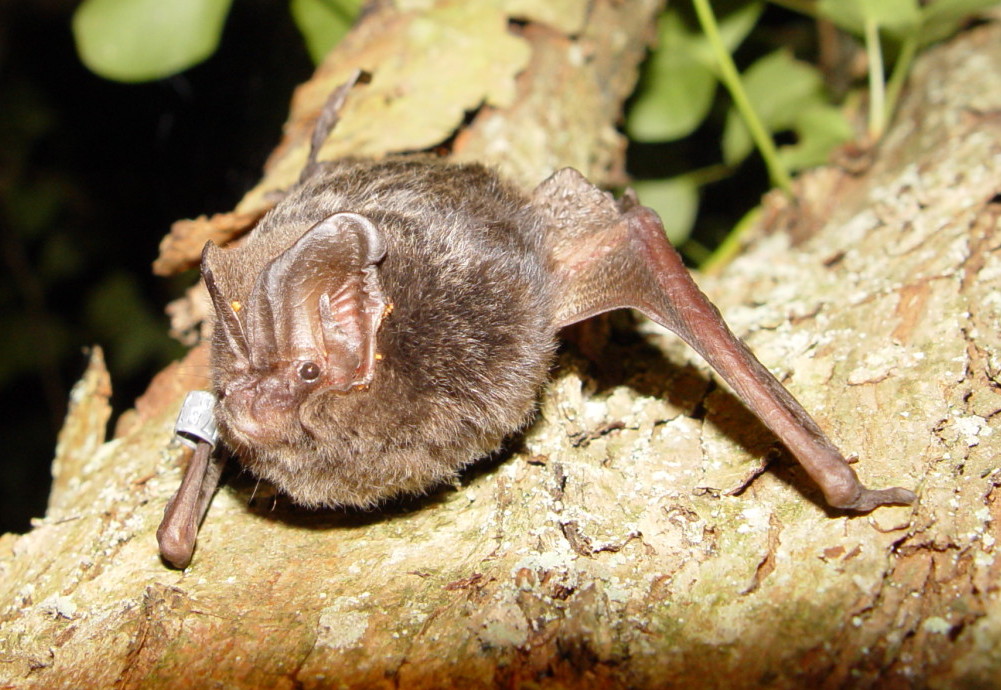Barbastelle

Status
Native and widespread but rare
Population
Unknown
Scientific name
Barbastella barbastellus
Barbastelles do not look like any other species: they have a distinctive, flattened face, with broad ears that meet at their base. Their face and ears are black and they have very dark, silky fur that has white tips, giving it a ‘frosted’ look. They emerge at dusk to feed on small insects, often over water. Their broad wings enable them to fly slowly and skilfully, and to pick up insects from leaves or in flight. On the continent, they are known to be highly migratory and have been recorded travelling more than 100km.
Wingspan: 24 – 29cm
Weight: 6 – 13g
Lifespan: Up to 24 years
Reproduction
Mating occurs in early autumn at the end of the nursery roost period and the females form small maternity colonies the following spring. A single pup (or occasionally twins) is born in July or early August and is weaned by six weeks.
Diet
Small moths, flies and beetles
Habitat
Deciduous woodland, wet meadows and water bodies such as wooded river valleys.
Summer roosts
Mostly in hollow trees, under bark, and in roof spaces of old buildings.
Winter roosts
Caves, tunnels, cellars and hollow tree trunks. They frequently move between winter roosts and may forage in mild weather.
Threats
Loss of deciduous woodland habitat; and pesticides.
Ultrasound
On a bat detector, echolocation calls of barbastelles sound like short, hard smacks in fast and then slow pulses, at about 32kHz.
Status and conservation
GB Red List: Vulnerable (VU).
Population size and distribution
GB population unknown. Their distribution is wide but thinly spread in southern and central England and Wales. They are absent from Scotland and Ireland.
Did you know?
Barbastelles use different echolocation calls when commuting between sites and when foraging. In light conditions, they will fly with no apparent echolocation.
